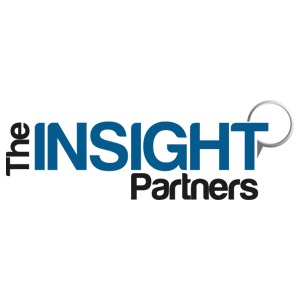Energy & Environment Industry Today
Comprehensive study by type, capacity, application, and geography outlines future landscape for forklift battery industry
A new research report titled “Forklift Battery Market Size and Forecast (2021–2031)” has been published, offering detailed insights into the evolving global and regional markets for forklift batteries. The report provides a rigorous analysis of market segmentation, growth drivers, restraining factors, and opportunity areas, covering multiple battery types, capacity ranges, and end‑use applications.
This study is intended to support a wide range of stakeholders — from original equipment manufacturers (OEMs), battery producers, distribution firms, benchmarking analysts, to investors, and policy makers — by offering data‑driven forecasts and strategic perspectives.
Get Sample Report @ https://www.theinsightpartners.com/sample/TIPRE00009135
Key Scope & Segmentation
The report divides the forklift battery market along the following major axes:
- By Type
- Lithium‑Ion
- Lead Acid
- Others (e.g. specialized chemistries, hybrid types)
- By Capacity
- 0–600 Ahr
- 600–1,200 Ahr
- Above 1,200 Ahr
- By Application / End Use
- Manufacturing
- Construction
- Warehouse & Logistics
- Automotive
- Retail & Wholesale Stores
- Others
- By Geography / Region
- North America
- Europe
- Asia Pacific
- Latin America
- Middle East & Africa
- Key countries (wherever applicable)
The timeline covers from 2021 through 2031, offering both historical context (from 2021–2025) and forward‑looking projections (2026–2031).
Market Overview & Trends
The forklift battery market is witnessing transformation driven by several concurrent trends:
- Shift toward Lithium‑Ion technology due to its advantages in energy density, faster charging, longer lifecycle, and lower maintenance, supporting the rise in automation and electrification of material handling equipment.
- Demand for higher capacity units as operations scale and battery runtime becomes a key differentiator in efficiency.
- Increasing adoption in warehousing and logistics sectors, especially with the expansion of e‑commerce, which places greater reliance on high‑performance forklift systems.
- Regulatory pressures and emission reduction targets, prompting companies to upgrade from lead acid systems to cleaner alternatives.
- Supply chain constraints and raw material costs, influencing pricing dynamics and vendor strategies.
- Regional shifts in manufacturing and industrialization, especially in Asia Pacific, affecting demand and competition globally.
The report identifies how each of these trends impacts various segments by type, capacity, and region.
Regional & Segment Insights
Asia Pacific is projected to remain a dominant region given its manufacturing base, rapid industrial growth, and investments in automation. Within that, China, India, Japan, and ASEAN countries are likely to be focal points for both consumption and production.
North America and Europe will continue to adopt newer battery technologies, driven by stricter environmental standards and incentives for electrification. Growth in e‑commerce fulfillment centers further fuels demand in these markets.
In segment breakdowns:
- Lithium‑Ion is expected to register higher growth rates compared to lead acid, especially in medium and high capacity ranges (600‑1,200 Ahr and above).
- Lead Acid may still be preferred in applications where cost sensitivity is high, or where capital replacement cycles are extended.
- Among applications, warehouse & logistics and manufacturing are likely to remain among the largest end uses, while emerging usage in retail & wholesale stores and automotive facilities may gain share.
The capacity bracket 600–1,200 Ahr is forecasted to be the workhorse segment, balancing performance and affordability in many industrial operations.
Growth Forecasts & Opportunities
Over the 2021–2031 period, the forklift battery market is expected to experience steady expansion, powered by ongoing electrification of equipment, growth in automated warehousing, and replacement of legacy battery systems. The report outlines projections for absolute market size, compound annual growth rates (CAGRs) by segment, and relative share changes across types and regions.
Key opportunity zones highlighted include:
- Retrofitting existing fleets of conventional forklifts with advanced battery systems.
- Battery-as-a-Service (BaaS) models or leasing solutions to lower upfront capital barriers.
- Integration with renewable energy systems and smart charging infrastructure in industrial facilities.
- Joint ventures between battery R&D firms and traditional material‑handling equipment manufacturers to co-develop optimized solutions.
- Emerging markets in Africa, Latin America, and Southeast Asia, where electrification is at an earlier stage.
- Customization opportunities for specific industrial verticals (e.g. cold storage, chemical plants) requiring special battery performance features.
Competitive Landscape & Strategic Directions
The report also provides a competitive overview of major players across global and regional tiers. It profiles key companies active in the forklift battery sector, analyzing their product portfolios, R&D focus, strategic collaborations, capacity expansions, and market positioning.
Additional analyses include:
- Mergers, acquisitions, or partnerships in the battery/equipment space
- Investments in battery manufacturing capacity or new chemistry development
- Regional manufacturing footprint strategies
- Branding, distribution networks, and aftersales service models
One of the strategic imperatives identified is for companies to build scalable and flexible manufacturing capabilities, enabling switch over between battery chemistries or capacity classes to meet shifting demand. Firms with strong partnerships in the material handling ecosystem, and those able to provide bundled solutions (battery + charger + service), may gain an edge.
Access full Report Description, TOC, Table of Figure, Chart, etc. at: https://www.theinsightpartners.com/buy/TIPRE00009135
About The Insight Partners
The Insight Partners is a one-stop industry research provider of actionable intelligence. We help our clients in getting solutions to their research requirements through our syndicated and consulting research services. We specialize in industries such as Semiconductor and Electronics, Aerospace and Defense, Automotive and Transportation, Biotechnology, Healthcare IT, Manufacturing and Construction, Medical Devices, Technology, Media and Telecommunications, and Chemicals and Materials.
Contact Us:
- If you have any queries about this report or if you would like further information, please get in touch with us:
- Contact Person: Ankit Mathur
- E-mail: ankit.mathur@theinsightpartners.com
- Phone: +1-646-491-9876
- Also Available in: Korean German Japanese French Arabic Chinese Italian Spanish
Share on Social Media



Other Industry News
Ready to start publishing
Sign Up today!








